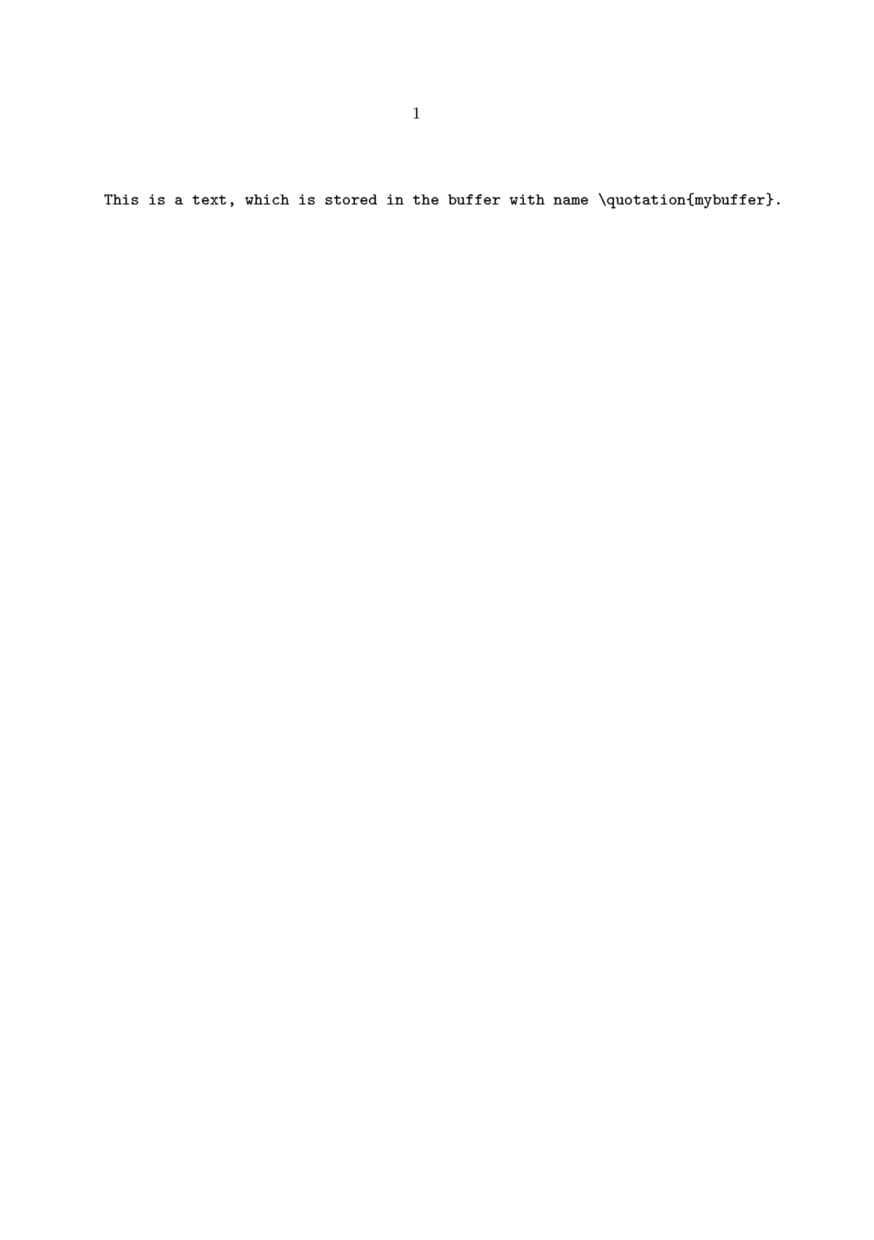Difference between revisions of "Command/typebuffer"
< Command
Jump to navigation
Jump to search
(Made the syntax more clearly.) |
m (Removed an error in "See also" section: extension of text file in command \input must not be ".tex".) |
||
| Line 39: | Line 39: | ||
* [[cmd:getbuffer|\getbuffer]] - Get back the "formatted" content of a buffer. | * [[cmd:getbuffer|\getbuffer]] - Get back the "formatted" content of a buffer. | ||
| − | * [[cmd:input|\input]] - Include the complete content of a text file | + | * [[cmd:input|\input]] - Include the complete content of a text file. |
* [[cmd:startbuffer|\startbuffer]] - Define the content of a temporarily buffer. | * [[cmd:startbuffer|\startbuffer]] - Define the content of a temporarily buffer. | ||
[[Category:Reference/en|typebuffer]] | [[Category:Reference/en|typebuffer]] | ||
Revision as of 12:01, 2 July 2011
\typebuffer
Syntax
| \typebuffer[buffer] | |
| [buffer] | name of the buffer |
Description
With \typebuffer[mybuffer] you can get back the verbatim content of buffer mybuffer, which was previously defined by command \startbuffer.
To get back the non-verbatim content of the buffer use the command \getbuffer.
Example
\starttext \startbuffer[mybuffer] This is a text, which is stored in the buffer with name \quotation{mybuffer}. \stopbuffer \typebuffer[mybuffer] \stoptext
produces

See also
- \getbuffer - Get back the "formatted" content of a buffer.
- \input - Include the complete content of a text file.
- \startbuffer - Define the content of a temporarily buffer.